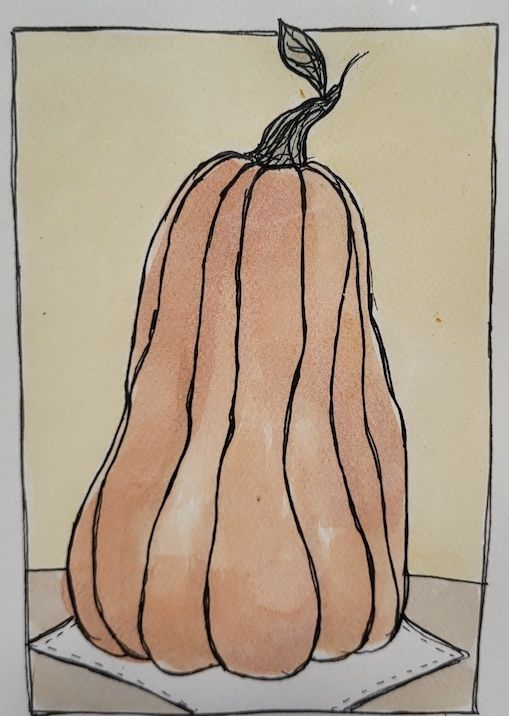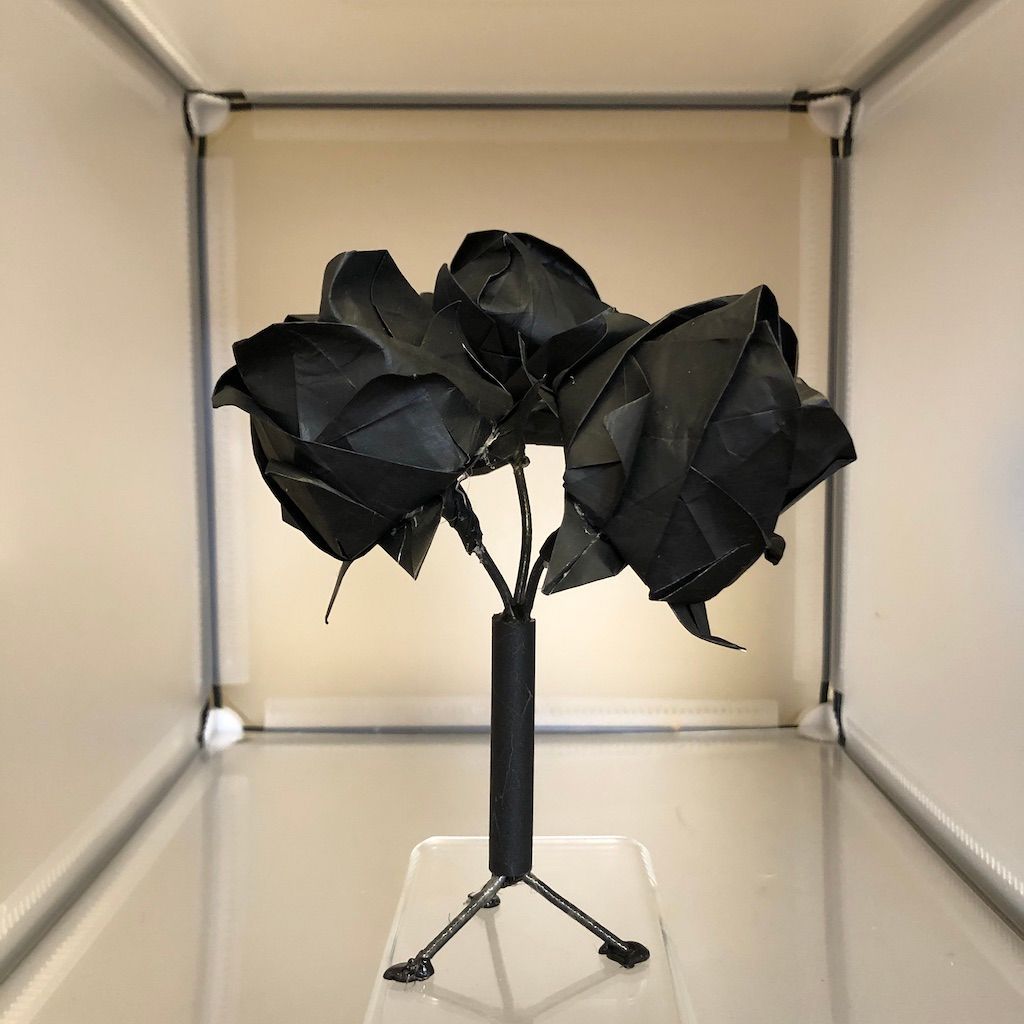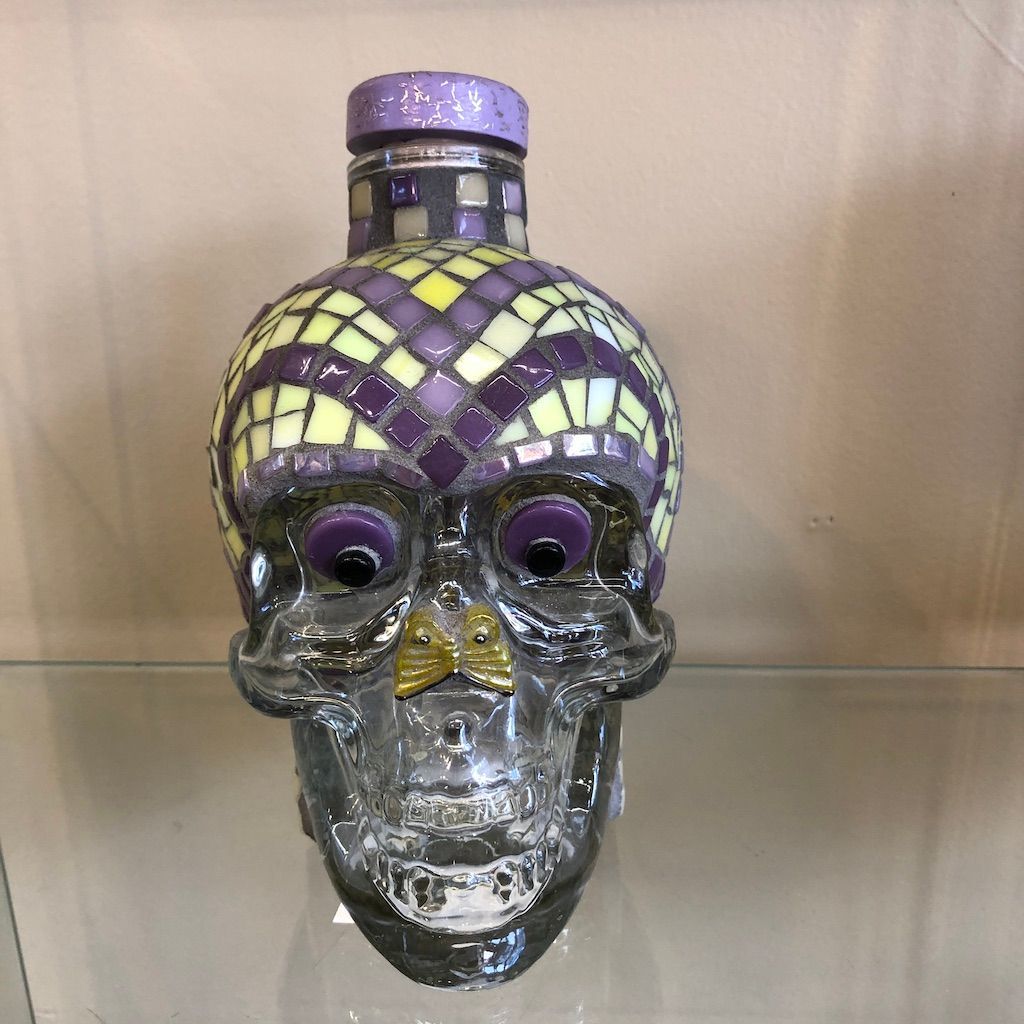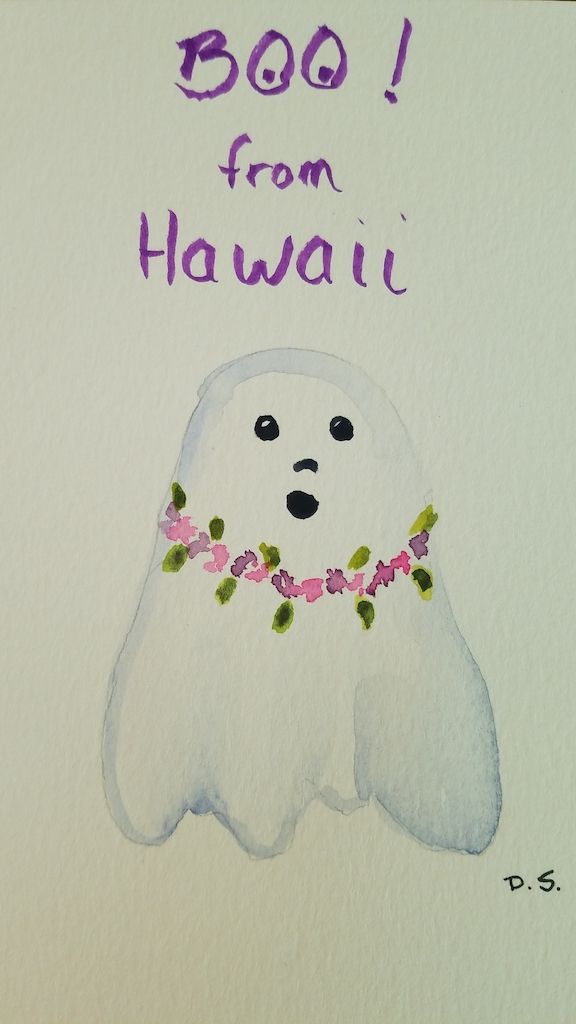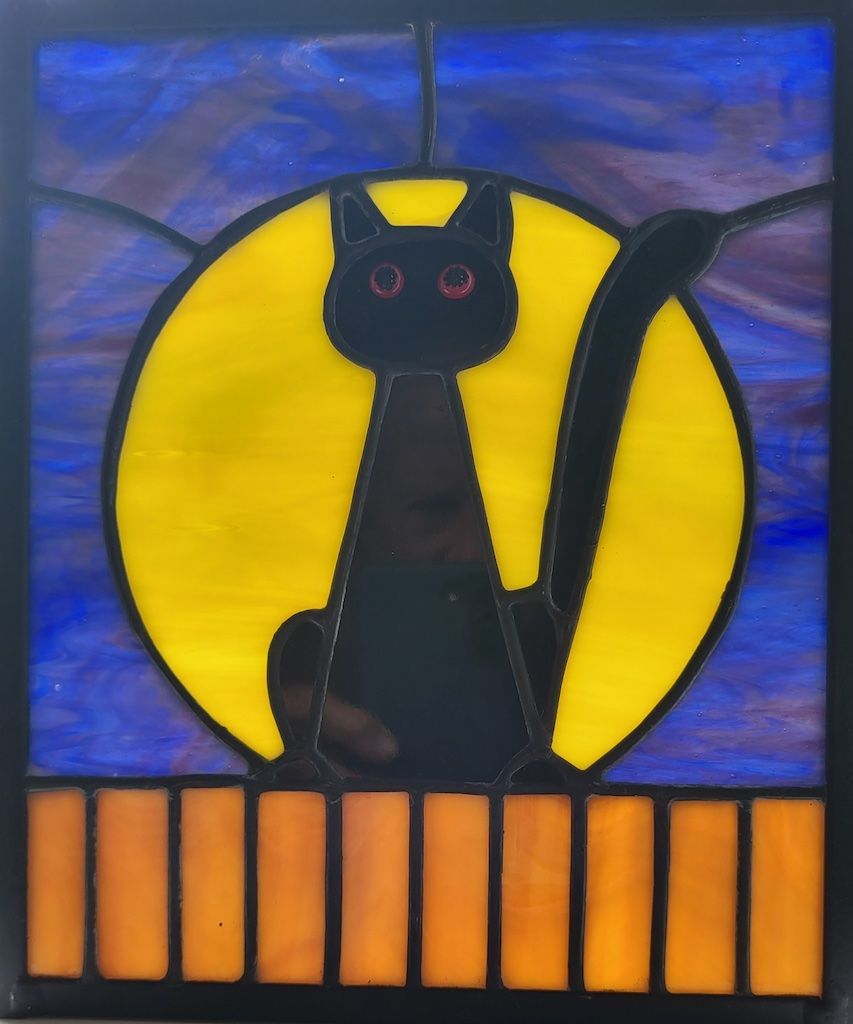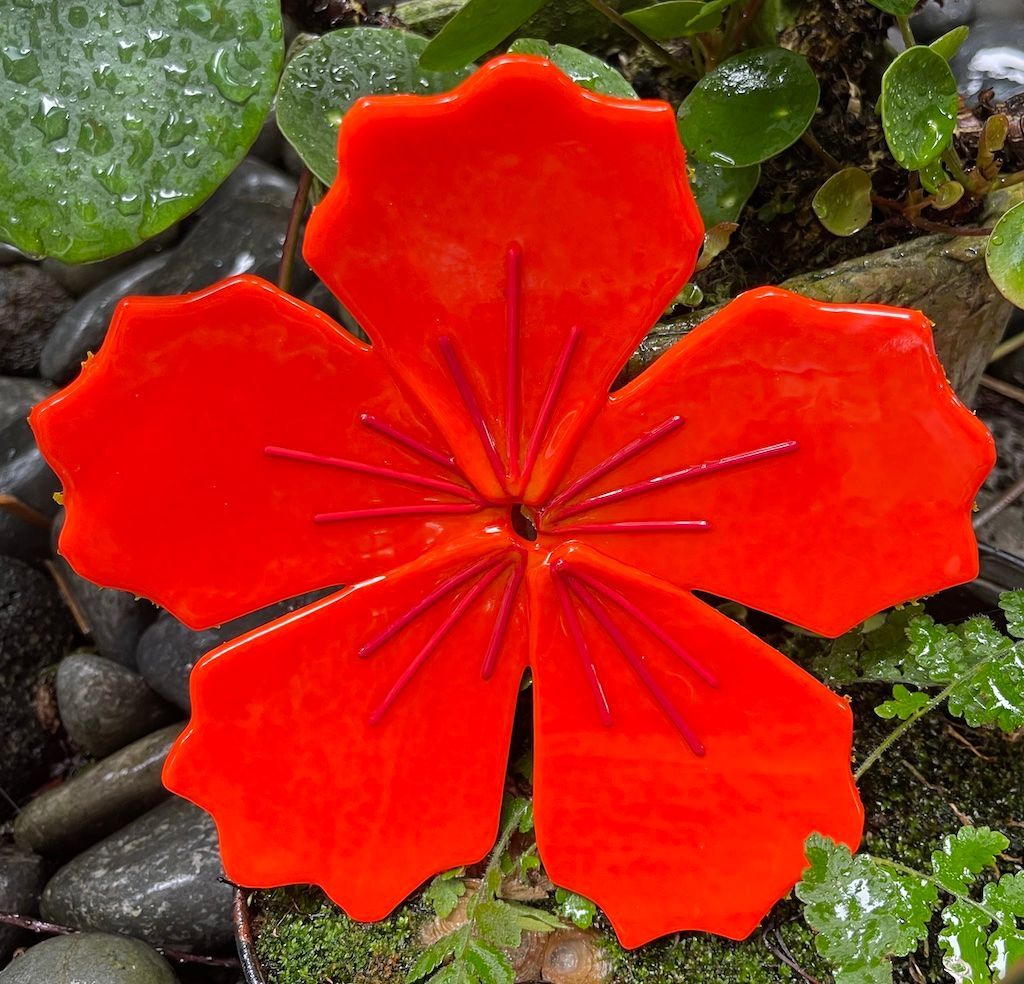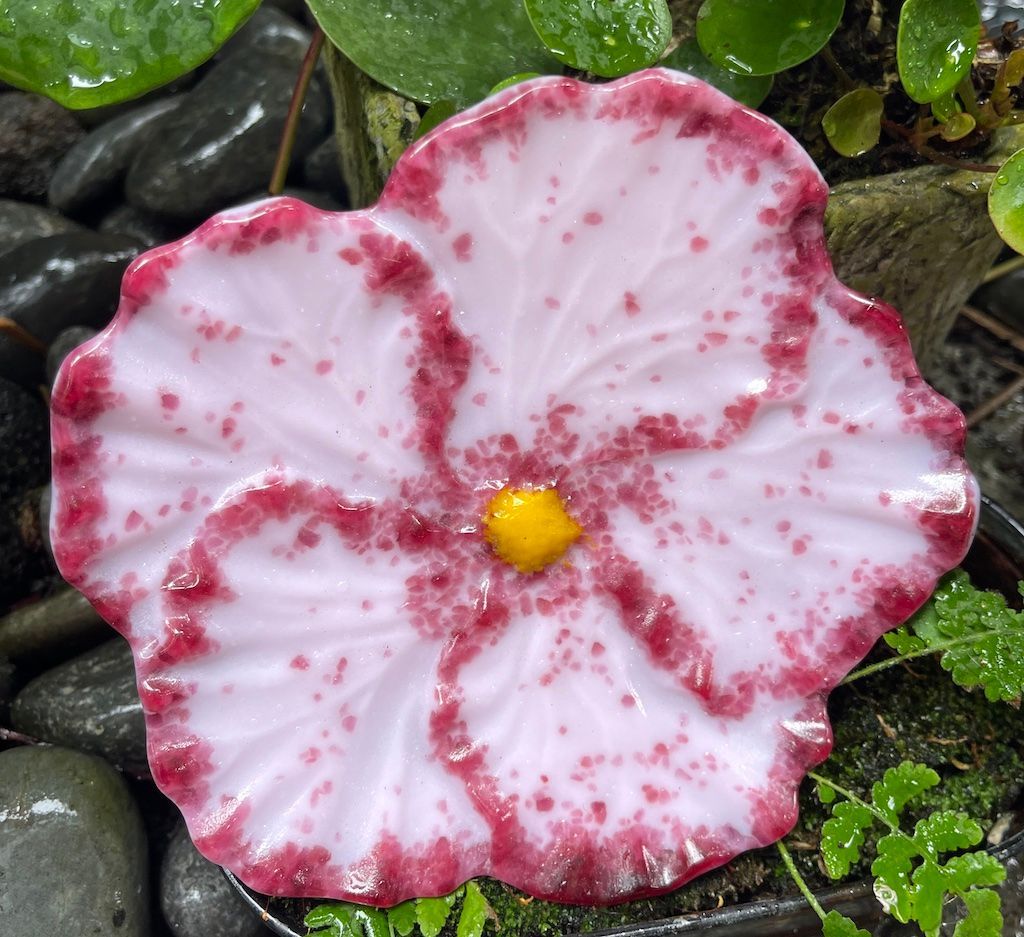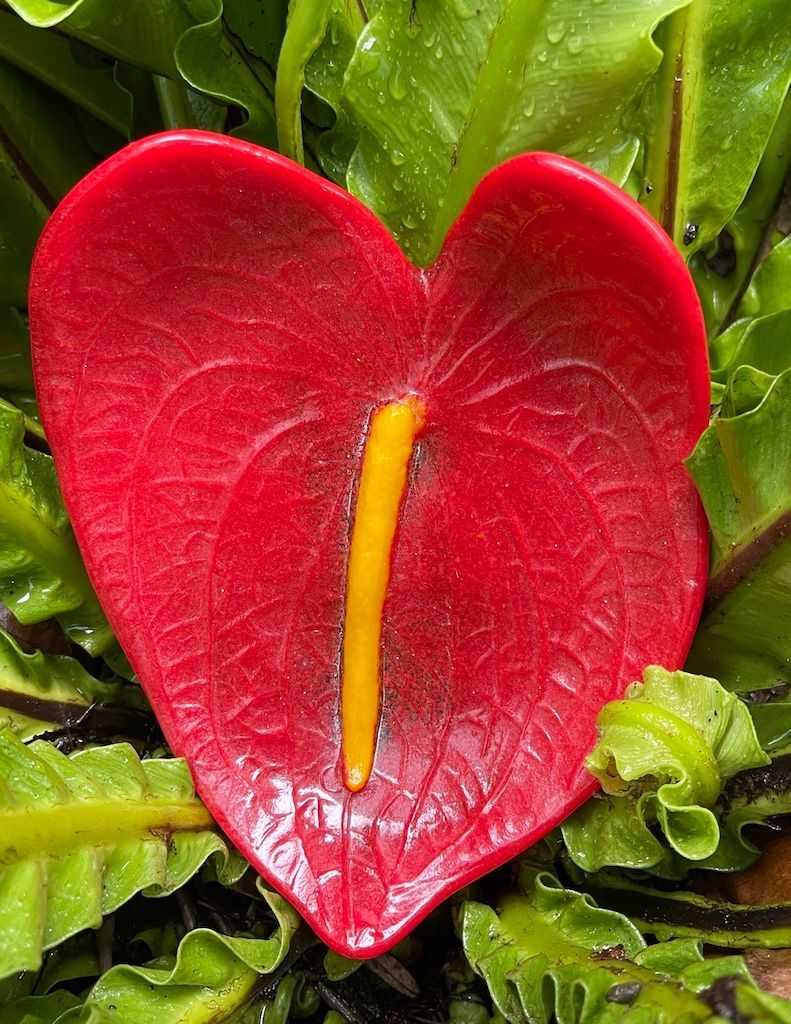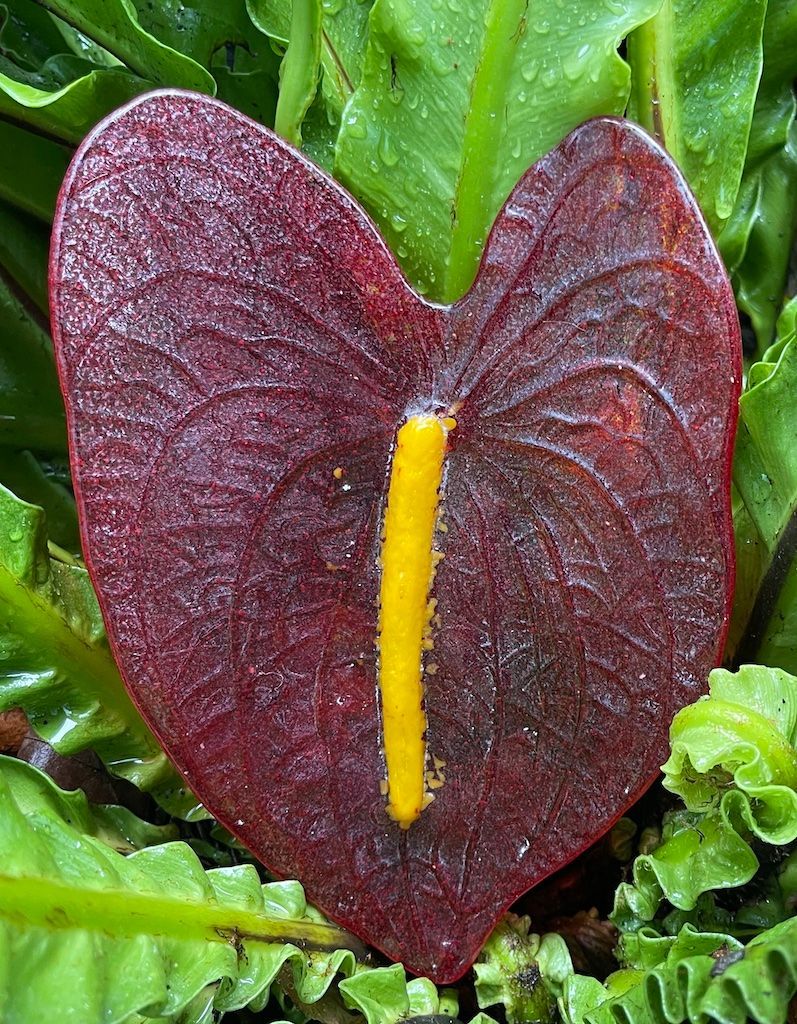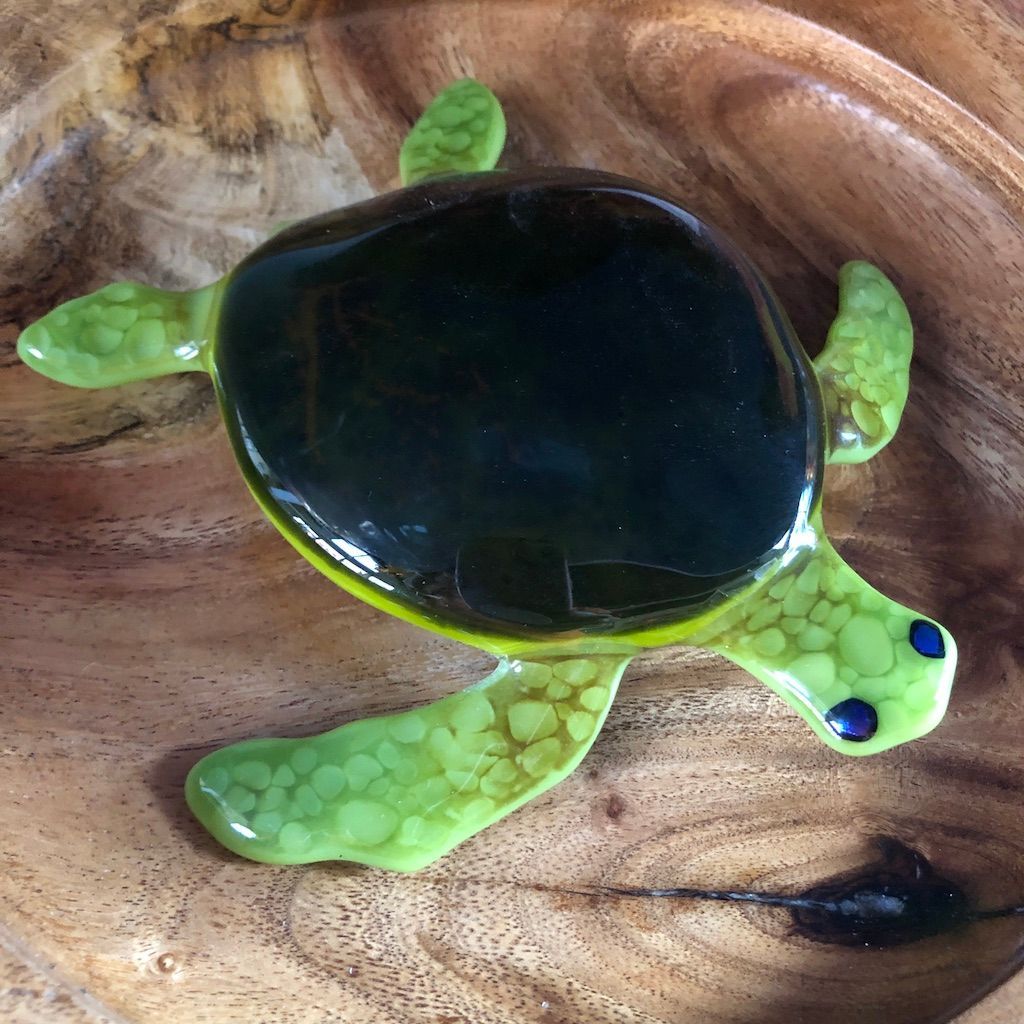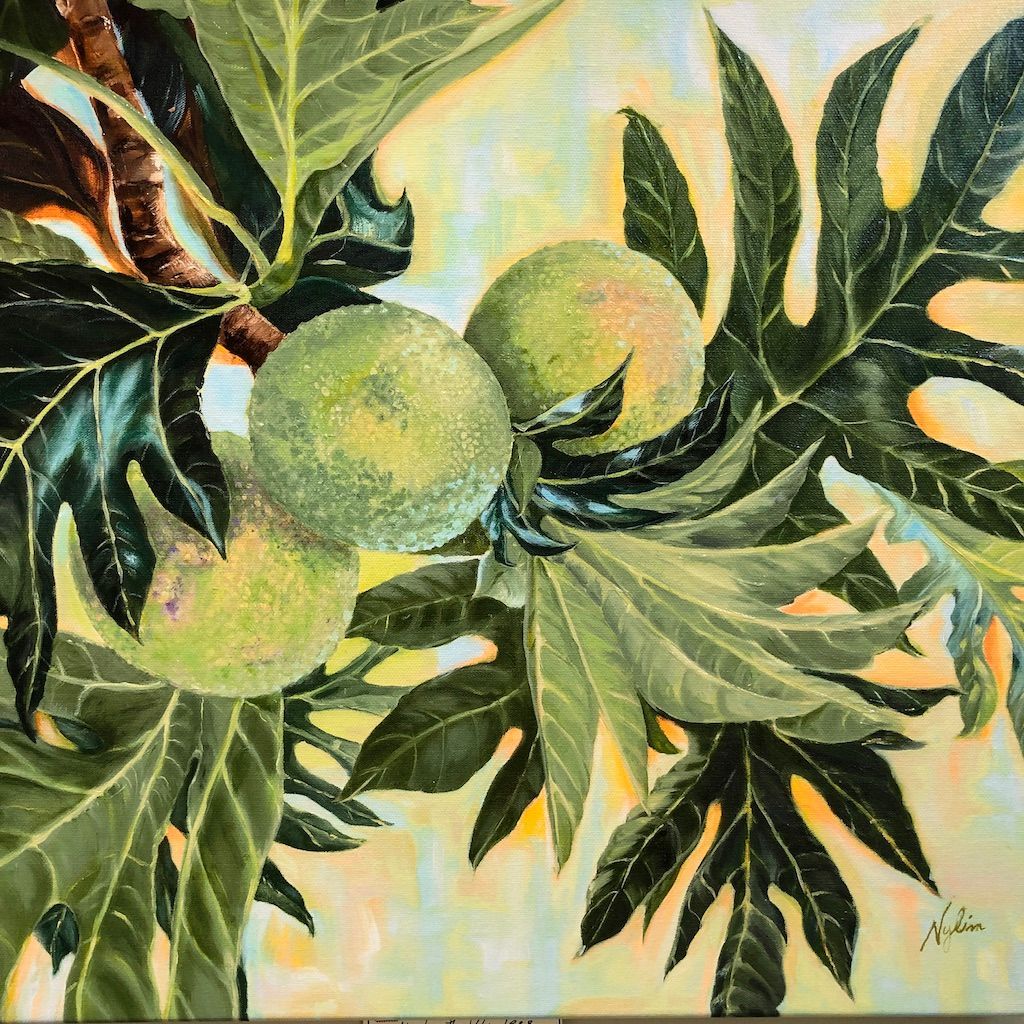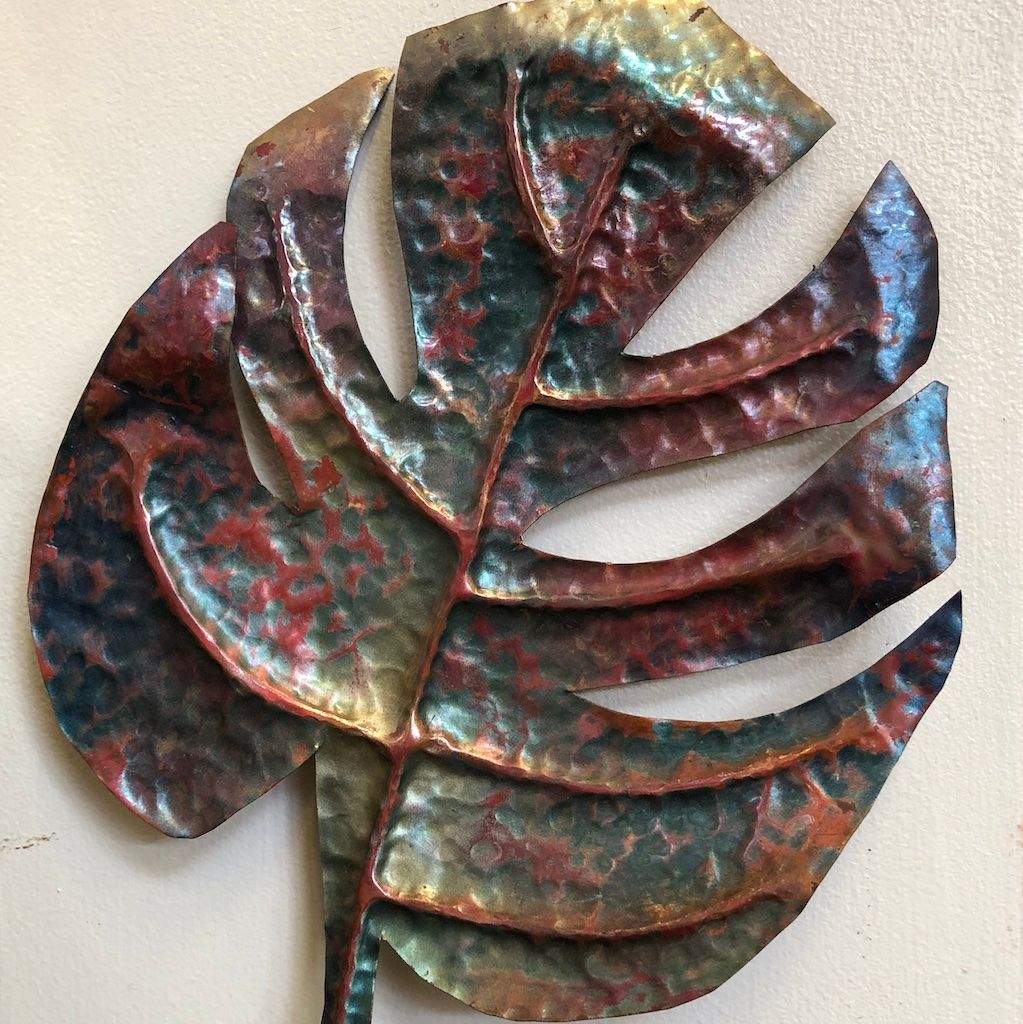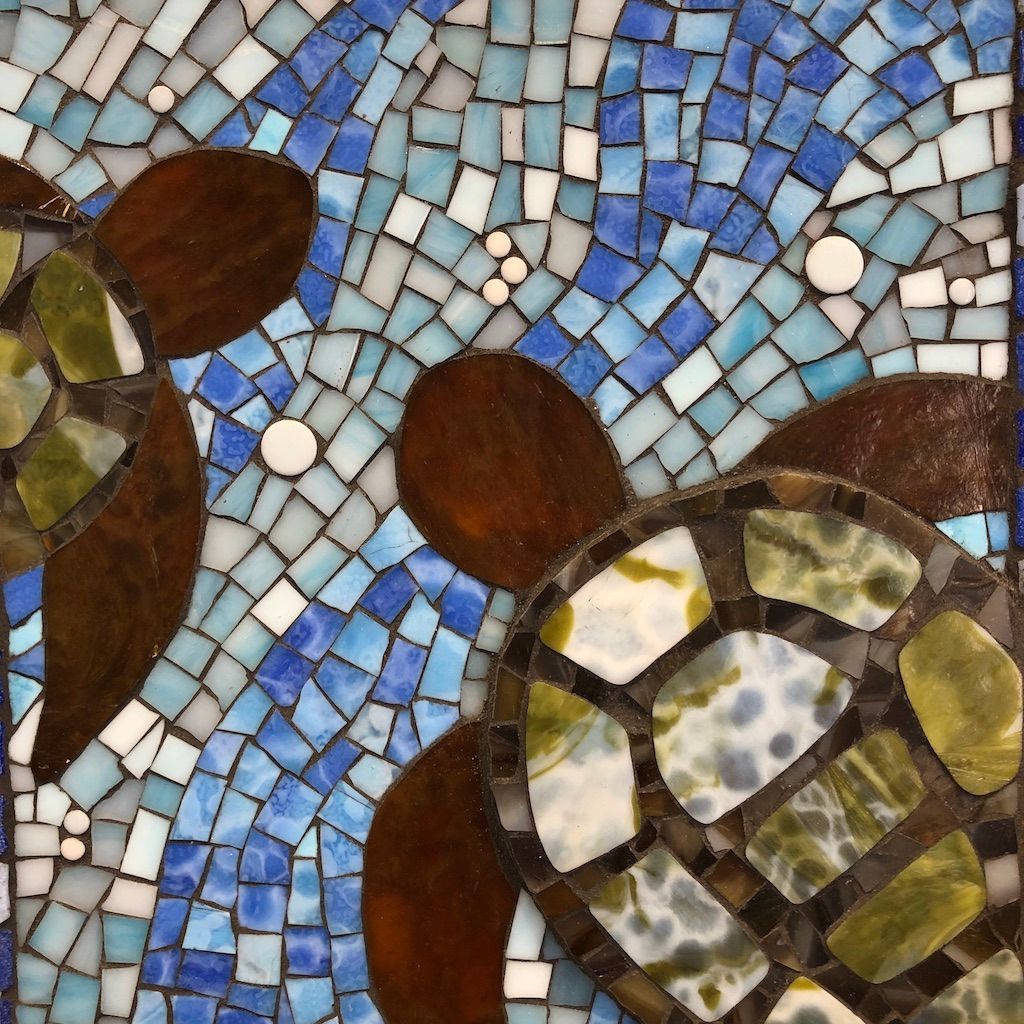October 2023 at the Gallery
Volume 14, Issue 10
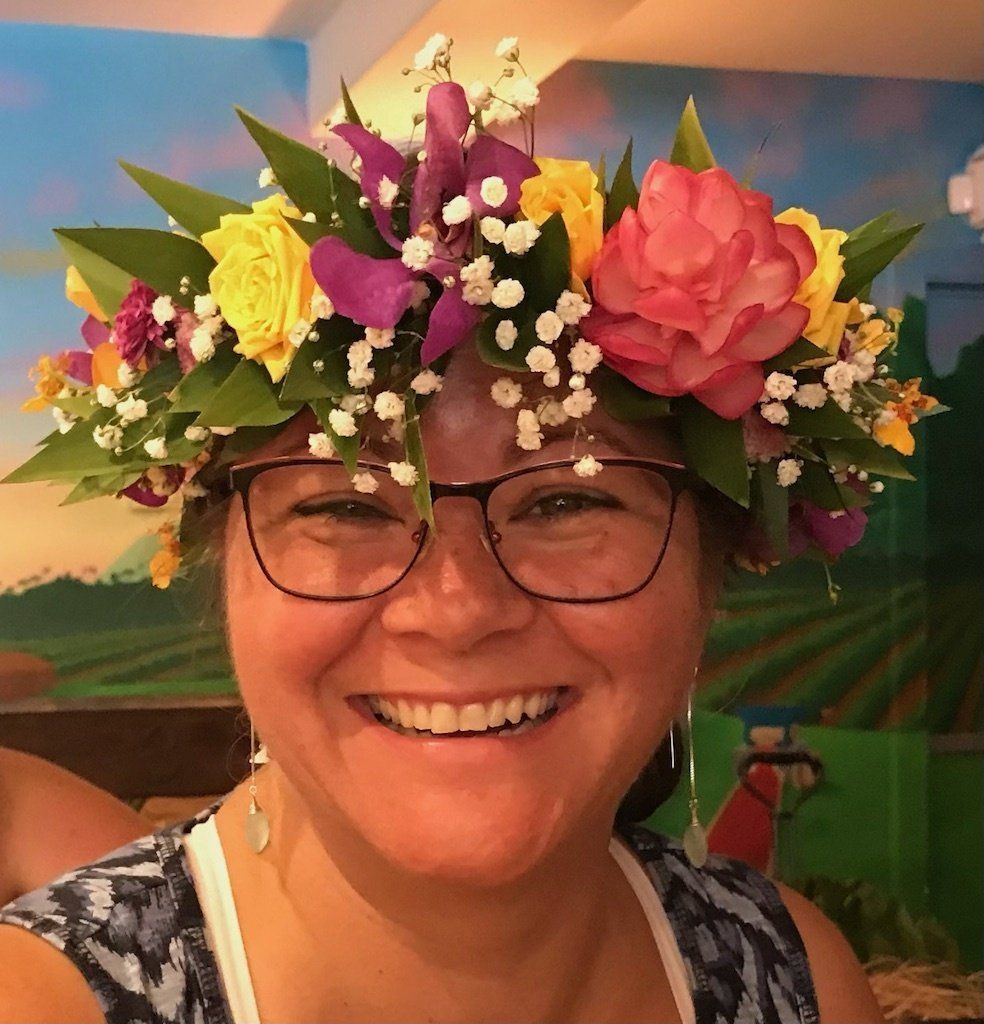
Stepping into Tamisha Lee’s fused glass workspace is like falling down a rabbit hole into a secret chamber of glass magic. Her’s is not an orderly space suggesting that you keep your imagination and your hands reined in. Rather it is a space that entices you to touch and inspires creativity.
A single stool hides amidst an area filled with workbenches, tables, and shelves; I suspect it doesn’t get much use. Tools, trays, molds, and jars of glass beads, frit (ground glass), confetti, sheets, and randomly cut pieces cover every available horizontal surface . . . in layers. Nested here and there amidst the organized chaos are creations in various stages of development. It’s like the materials themselves are giving rise to new life.
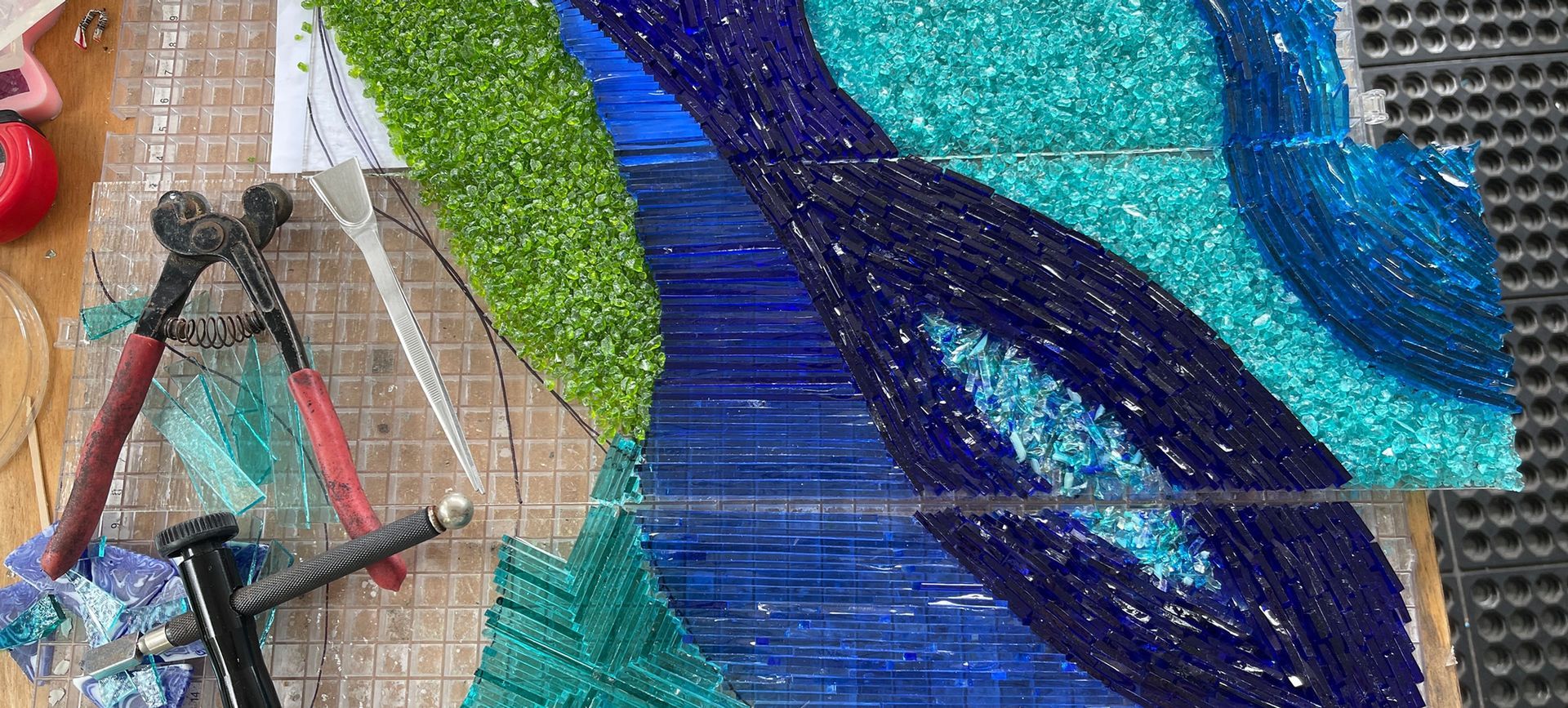
Lee has a true love for glass, from its inherent beauty, to its errant nature, especially during those unobserved periods in the kiln. In her workspace, glass is invited to speak and Tamisha listens. She meanders from project to project, telling the story of its creation thus far, and what’s might happen next in its development. It’s never the same; each piece is truly an original unto itself. She clearly has standards and aspirations for all of her works, but her process also involves seeing how each piece matures and affords leeway for it to flourish into something novel and truly extraordinary.
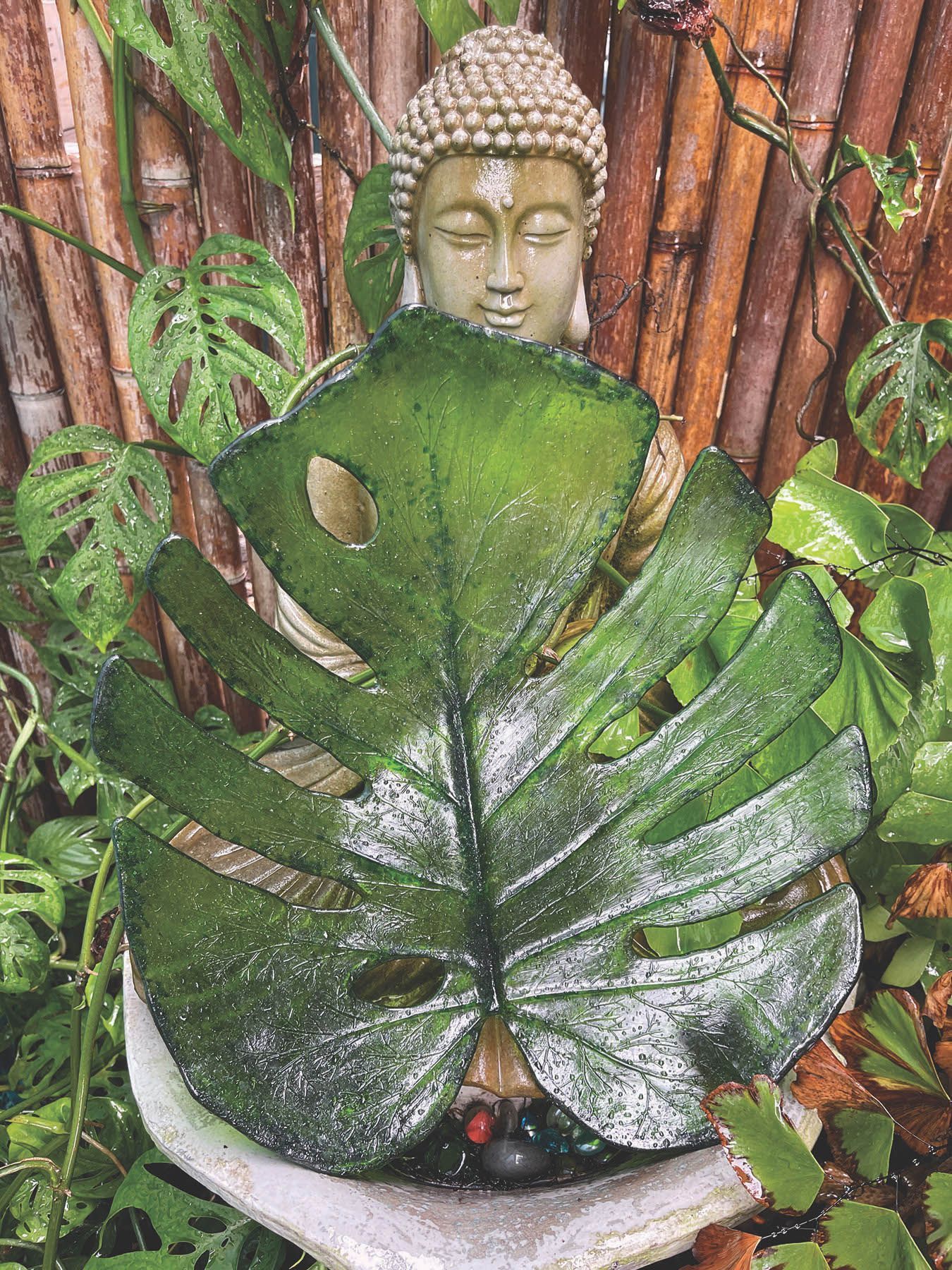
Kailua Kona Athletics:
Home Of The Ironman Championship
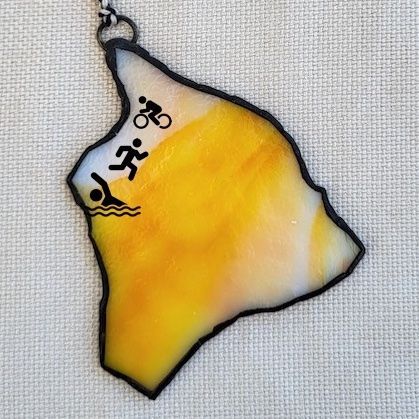
Last month, we started a two-part story on how the Kona environs invites outdoor athletics and athletes. We described the Queen Liliuokalani Canoe Race that brings long distance paddlers from across the state to Kailua Bay, which is just a ten minute walk from our gallery. This month, we continue our story on Kona athletics, focusing on the globally recognized Ironman Triathalon.
The race idea came about through a discussion held at the 1977 O’ahu Perimeter Relay. This 5 person team relay included swimmers and runners in its ranks, which led to a debate about which athletes were more fit, runners or swimmers? U.S. Navy Commander John Collins cited a Sports Illustrated article which declared that Eddy Merckx, the great Belgian cyclist, had the highest recorded oxygen uptake of any athlete ever measured, so perhaps cyclists were more fit than either runners or swimmers? The discussion continued until Cdr. Collins suggested combining three existing long distance competitions: the Waikiki Rough Water Swim (2.4 miles), the Around Oahu Bike Race (115 miles), and the Honolulu Marathon (26.2 miles).
The first such event was actually held in Honolulu in 1978. Participants were given three sheets of paper with the routes and rules. Handwritten at the bottom was this encouragement: “SWIM 2.4 MILES! BIKE 112 MILES! RUN 26.2 MILES! BRAG FOR THE REST OF YOUR LIFE.” It's now a registered trademark. Collins said, “Whoever finishes first, we’ll call him the Iron Man.”
The first race had fifteen participants, but only twelve finished. As it happens, a Sports Illustrated journalist happened to be in town covering a golf tournament at the time. Barry McDermott wrote a ten page article that generated enough curiosity that the following year, hundreds were interested in this curious race.
The third Ironman race moved to Kona in 1980. ABC’s Wide World of Sport filmed the event which catapulted the sport to a world wide audience. Today the race is called the Ironman World Championship and it is the most prestigious triathlon in the world. There are over 170 triathlons in the world, and Kona is the World Championship. Last year, over 5,000 athletes participated in the race. Because of its growing popularity, the triatheletes were split into two groups competing on two separate days last year. This year, the championship races have been split into two locations. The women's race will happen here in Kona, and the men's race will be in France. Next year, the men will be in Kona and the women in France.
This year, the race will take place on October 14. As exciting as it is, the Ironman does cause a measure of upheaval in our little town. Road closures and crowds of onlookers force many businesses to close for the day, KVA Gallery included. We will be open the day before the Ironman and re-open the day after. Triathletes are welcome to stop in and support us as we support them.
Contributors to this article:
Tamisha Lee.
Currently, flowers are abloom in her workshop.
And no two blossoms are alike. Here, diversity is embraced, with all variety of color, shape, size, and texture. Separate petals, fused petals, curled petals, flat petals. Each flower has its own individual beauty, making the collective effect stunning. Being a KVA member artist and our Featured Artist for the month of October, Tamisha will be sharing some of this collection of Floral Aloha at our gallery.
Besides flowers, some of the classics in Tamisha’s collection include honu (sea turtles), fish, hula dancers, and whales. Her honu and humpback whales have been incorporated into collaborative fused glass-stained glass art works by herself and stained glass artist Bill Jaeger.
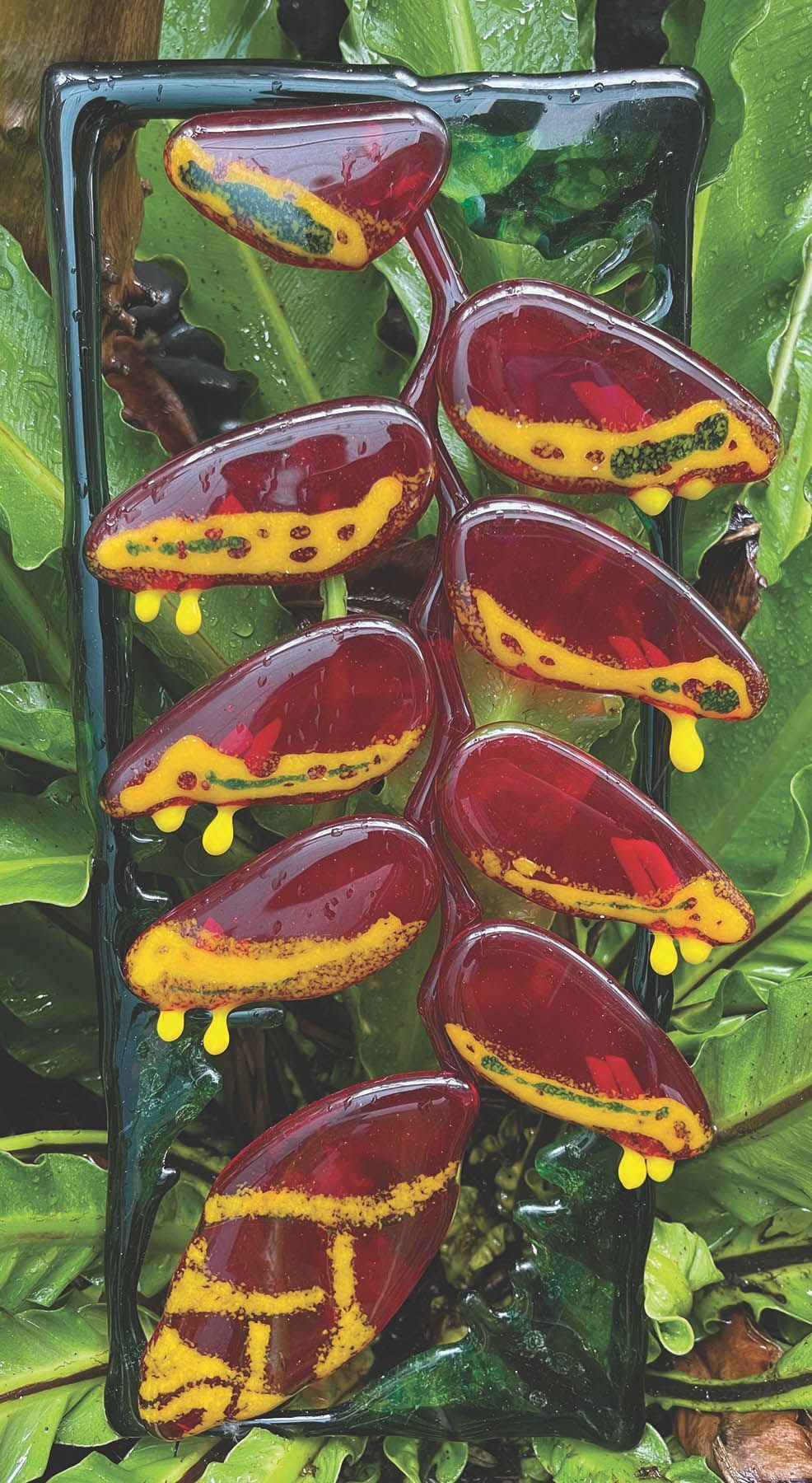
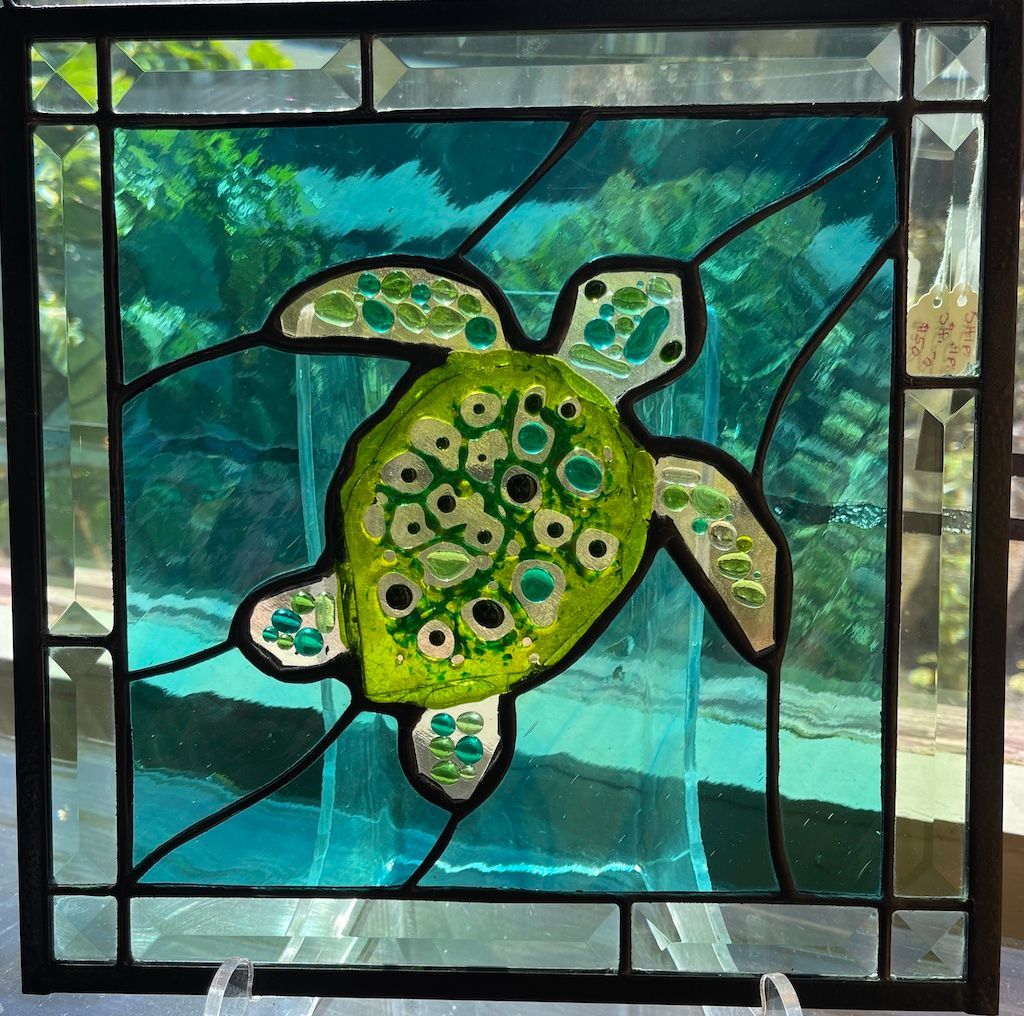
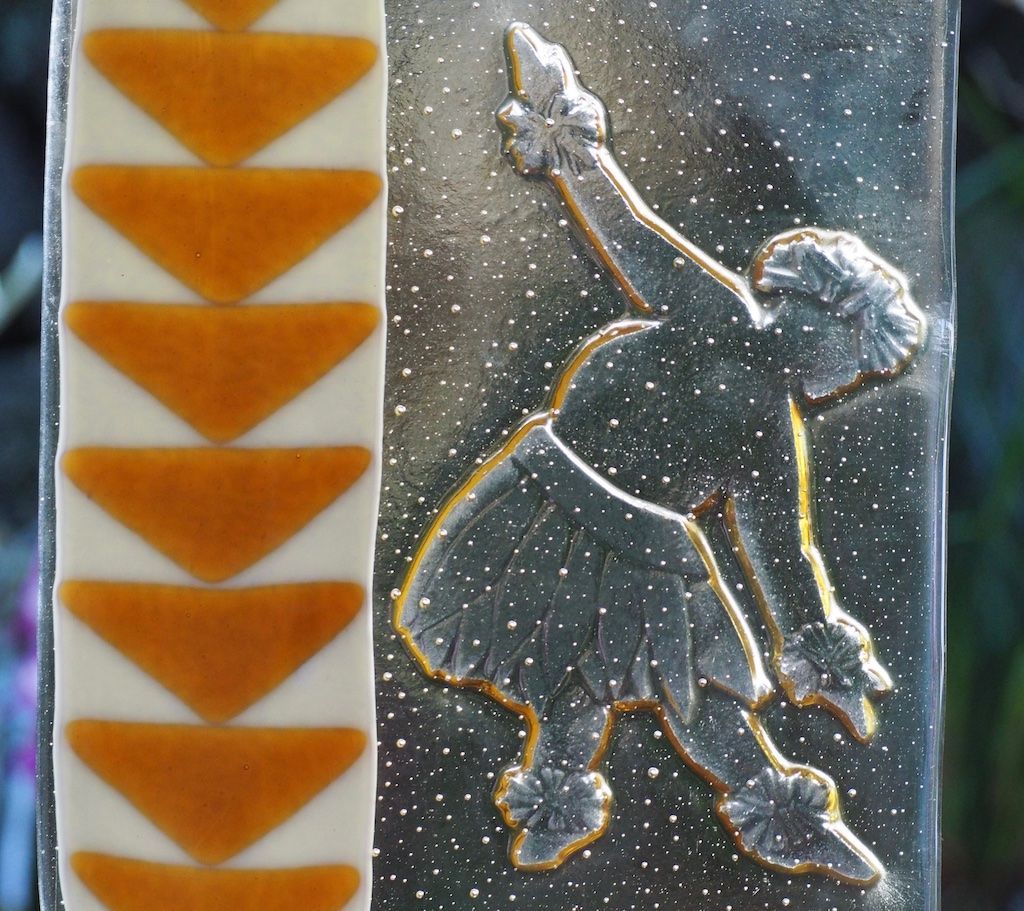
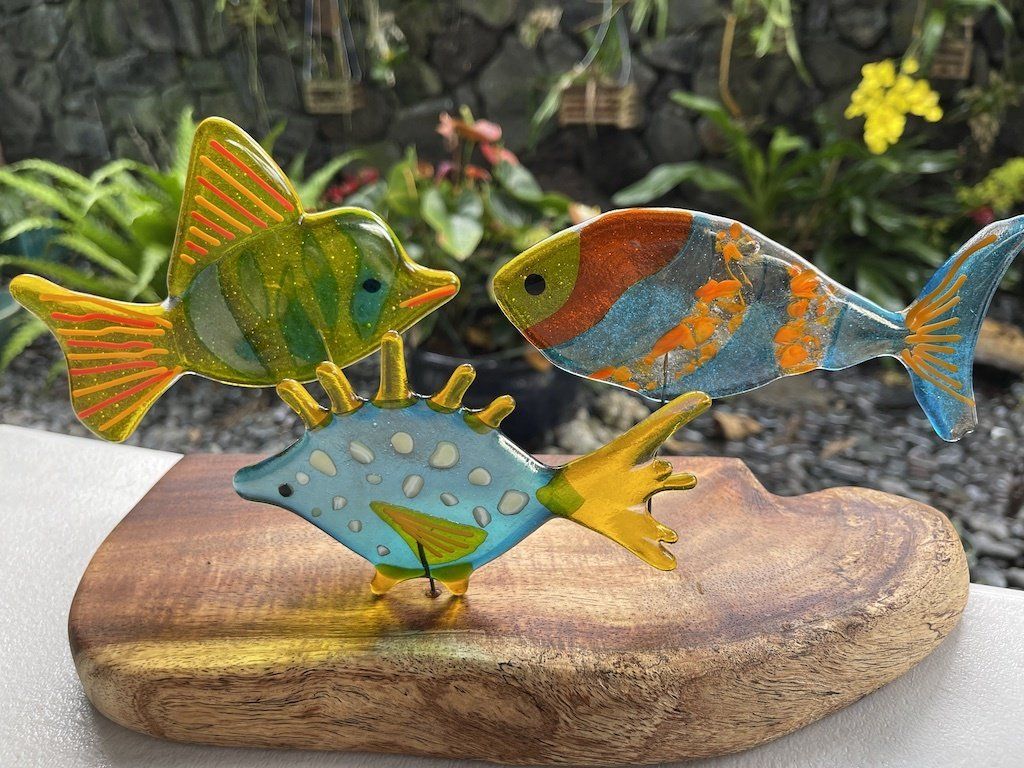
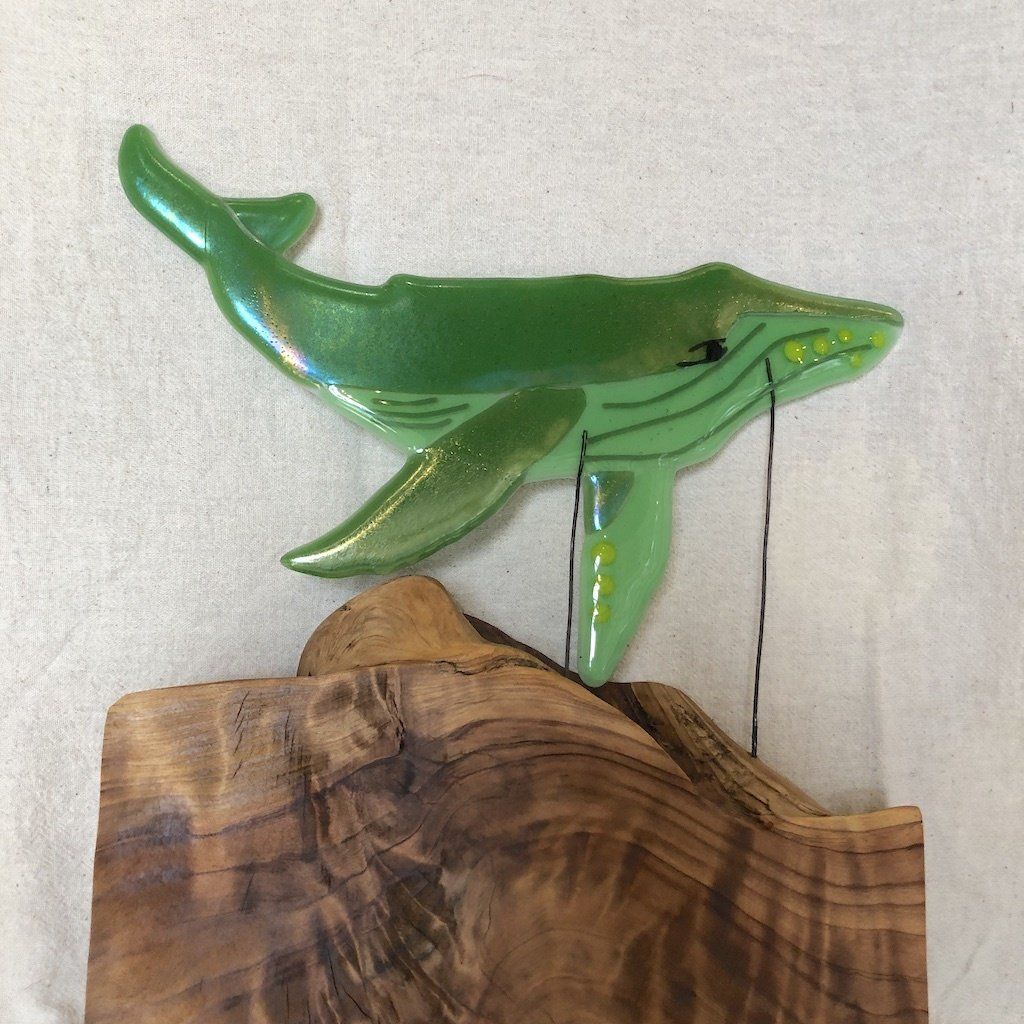
KVA Gallery will also have the privilege of presenting Lee’s incomparable Ahupua’a Tryptic. Ahupua’a is an ancient Hawaiian style of land division that extends from the mountains to the sea, usually including a watershed of fresh water. In this way, each ahupua’a included an upland forest region, areas that could be cultivated, and areas that could be fished. Properly managed, each ahupua’a was intended to provide resources to shelter and feed the resident population with a little bit of extra for tributes and trade.
These three large panels depict an abstract version of the interconnection and flow of an
ahupua'a. The upper amber and green section represent the
uka or upland forested regions. The grasslands or
kula are represented by herringbone and vertical lines, blue to show the vast waterworks created by ancient Hawaiians to grow wetland taro. And the bottom section represents the shoreline or the
kai, which were dotted with villages and fish ponds. The stacking cobalt lines are reminiscent of stacked stone walls that characterized animal pens and
ahupua'a boundaries.
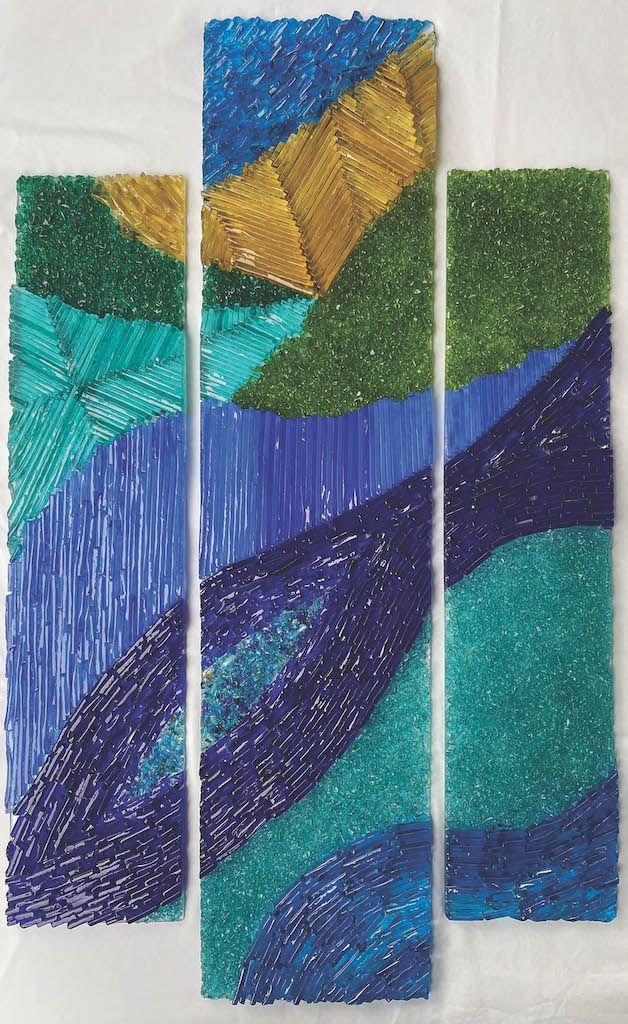
Talk story with the fused glass artist Tamisha Lee and learn more about her work. She will be working at the gallery on Sunday, Oct.1, Tuesdays Oct. 9 and 16, and Saturday, Oct. 21, 2023.

